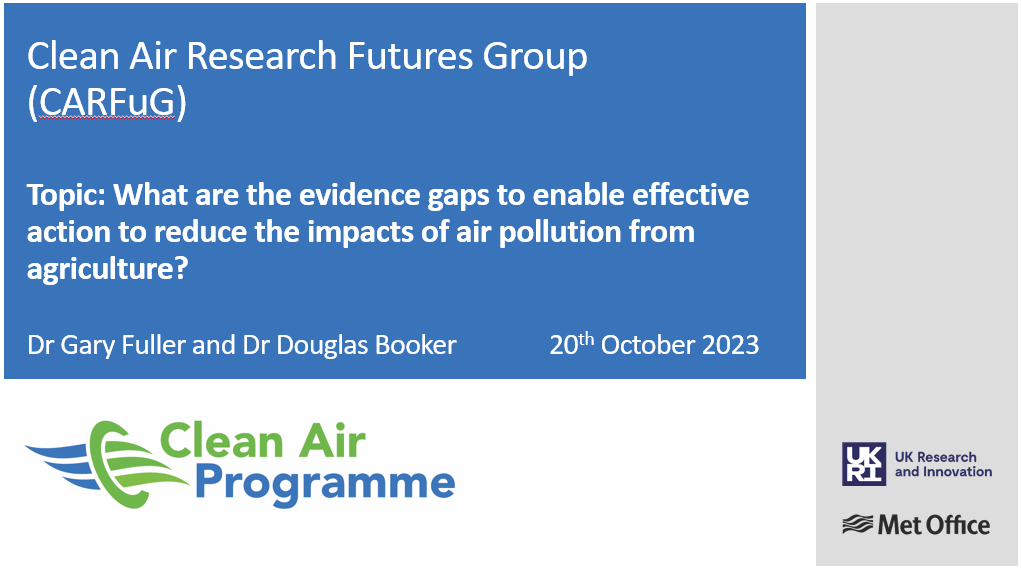Meeting 5: What are the evidence gaps to enable effective action to reduce the impacts of air pollution from agriculture?
PM2.5 across the UK and Western Europe is frequently dominated by particles that contain ammonia. Within the UK around 90 % of ammonia comes from agriculture. Ammonia is emitted as a gas and rapidly transforms into ammonium particles by combining with sulphate and nitrate. These represent roughly 20% to 40% of total PM2.5 in the air.
Despite clear evidence from the air pollution science community, progress in reducing emissions and concentrations has been slow. It is clear that the air pollution science community is not inclusive of all the possible solutions. Less heard are the voices of the farming community.
We therefore focused the fifth meeting of the Clean Air Research Futures Group on the topic, specifically, “What are the evidence gaps to enable effective action to reduce the impacts of air pollution from agriculture?”
View all our presentations below:

Presentation 1
 Loading…
Loading…
Ammonia and particulate matter by Dr James Allan, University of Manchester.
Presentation 2
 Loading…
Loading…
The influence of UK agricultural ammonia (NH3) emissions on urban air quality and future public health by Dr Karn Vohra
Presentation 3
 Loading…
Loading…
IMT Nord Europe and fine particles in Europe by Dr Anna Font
Presentation 4
 Loading…
Loading…
Air pollution from agriculture – evidence gaps by Dr Rob Kinnersley
Presentation 5
 Loading…
Loading…
DAERA Ammonia policy branch by Dr Kate Semple
Presentation 6
 Loading…
Loading…
AIM Health Project by Hilary Cowie
Presentation 7
 Loading…
Loading…
Slurry storage ammonia emissions and their mitigation – Dr Nicola Randall, Harper Adams University.
Presentation 8
 Loading…
Loading…
Reducing the impacts of air pollution from agriculture – Dr Barry McAuley